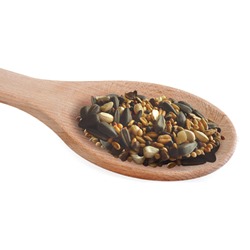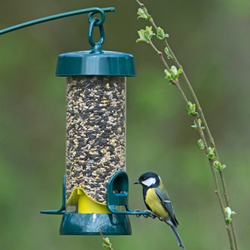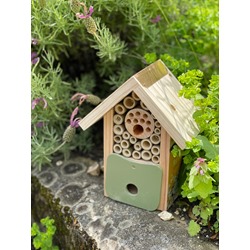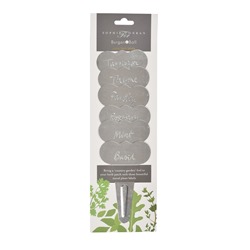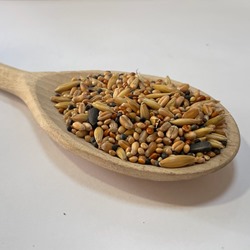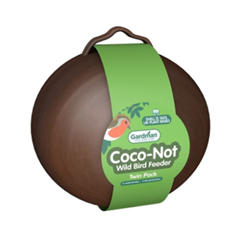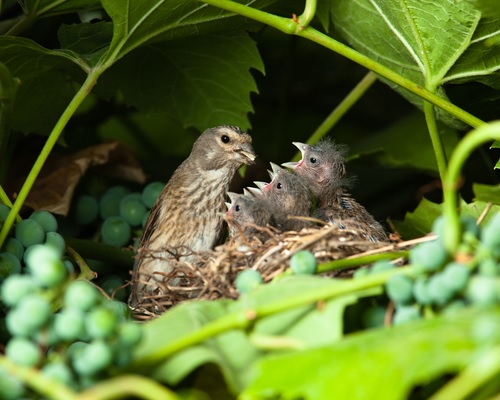
The linnet (Linaria cannabina) is a small finch that can be found in most parts of Great Britain and Ireland. Linnets are known for their melodious song - listen here - and used to be very popular as cage birds.
Sadly, linnet numbers have seen a significant decline in recent years. It is estimated that the UK's linnet population decreased by 57% between 1970 and 2014. The linnet is mentioned in the Wildlife and Countryside Act 1981 and is a priority species under the UK Biodiversity Action Plan.
How to identify linnets
The male linnet has a red breast and a red 'poll' (forehead patch) that makes it easy to identify.
Here's a picture of a male linnet:
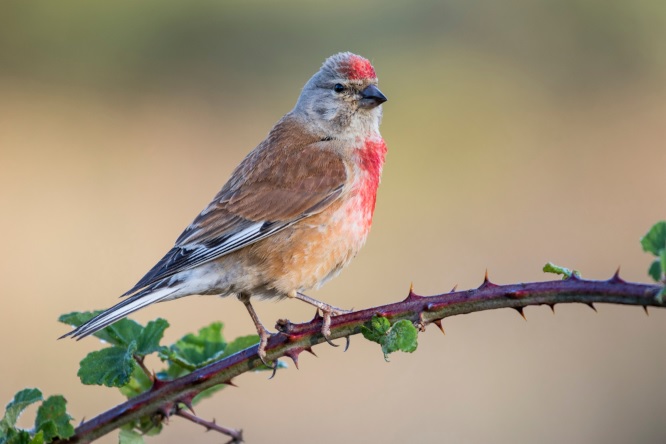
The female linnet is brown with a streaked pattern. The photo at the top of this article shows a female linnet feeding her young.
What do linnets eat?
Linnets like to eat hemp seeds and linseed. You might even say that this bird's taste for linseed in is one of its defining characteristics: both its common name (linnet) and the first part of its scientific name (Linaria) are derived from the word 'linen'. Linen is made out of linseed, also known as flax.
Linnets and their chicks rely almost entirely on seeds throughout the year. In the autumn months, sunflower seeds are a real favourite. During the winter, adults will favour stubbles and field margins where weed seed and split grains are abundant. Dandelion seeds in pasture are particularly important. Chicks feed on weed seeds and unripe oilseed rape grains.
Where are linnets found?
The linnet can be found in a variety of different habitats, including regions of scrub, wasteland, heath and urban areas.
On farmland, linnets can be found wherever there is a plentiful supply of seeds.
Linnets typically nest in thorn hedges. They are often found nesting 0 - 2 metres up in thick, well-maintained thorn hedges. Gorse bushes are a favoured nesting site.
Messy areas with rough grass and large bramble patches are also popular places for linnets to hang out.
Why are linnet numbers declining?
Linnet populations are declining for a number of reasons, including:
- Loss of suitable nesting / feeding sites
- More widespread use of herbicides and fertilisers, making wildflower seeds harder to come by
- Reduction of winter stubbles caused by autumn sowing
We do a number of things here on the farm to support the UK's wild bird population, including linnets.
Because linnets are especially reliant on seeds, wild bird-seed crops are extremely beneficial. Because we grow all of our own seed crops, our farm is a great place for linnets. We also allow plenty of green cover to develop on over-wintered stubbles, and we leave these undisturbed for as long as possible in the spring to give linnets a continuous supply of food.
You can do your bit for British wildlife - including the lovable linnet - by putting out bird seeds and planting wildflowers in your garden!
Buy Bird Food Buy Wildflower Seeds
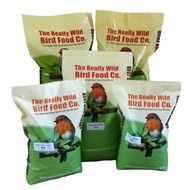 Back
Back Bird Foods
Bird Foods  Seed Mixes
Seed Mixes Straight Seeds
Straight Seeds Mealworms & Worms
Mealworms & Worms Chicken Feed
Chicken Feed Duck Food
Duck Food Peanuts & Peanut Butter
Peanuts & Peanut Butter Suet & Fat Balls
Suet & Fat Balls No Mess Bird Seed
No Mess Bird Seed  Wheat Free Bird Seed
Wheat Free Bird Seed Sunflower Seeds
Sunflower Seeds Softbill Bird Food
Softbill Bird Food Bulk Bird Seed
Bulk Bird Seed Trial Packs
Trial Packs Pick & Mix
Pick & Mix Mini Pick & Mix
Mini Pick & Mix Birdie Basics: Budget Bird Food
Birdie Basics: Budget Bird Food Food for Small Birds
Food for Small Birds Back
Back Bird Feeders
Bird Feeders  Seed Feeders
Seed Feeders Peanut Feeders
Peanut Feeders Peanut Butter Feeders
Peanut Butter Feeders Suet & Fat Feeders
Suet & Fat Feeders Window Feeders
Window Feeders Hanging Feeders
Hanging Feeders Feeding Stations
Feeding Stations Ground Feeders
Ground Feeders Easy Clean Feeders
Easy Clean Feeders Bird Tables
Bird Tables Seed Trays
Seed Trays Bird Baths & Drinkers
Bird Baths & Drinkers Feeder Accessories
Feeder Accessories Feeder Hygiene
Feeder Hygiene Squirrel Proof Bird Feeders
Squirrel Proof Bird Feeders For the Kids
For the Kids Niger Seed Feeders
Niger Seed Feeders Mealworm Feeders
Mealworm Feeders Bird Food Storage
Bird Food Storage Fat Ball Feeders
Fat Ball Feeders Tube Feeders
Tube Feeders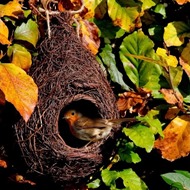



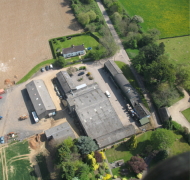 Our Farm
Our Farm  Tips & Advice
Tips & AdviceContact Us

